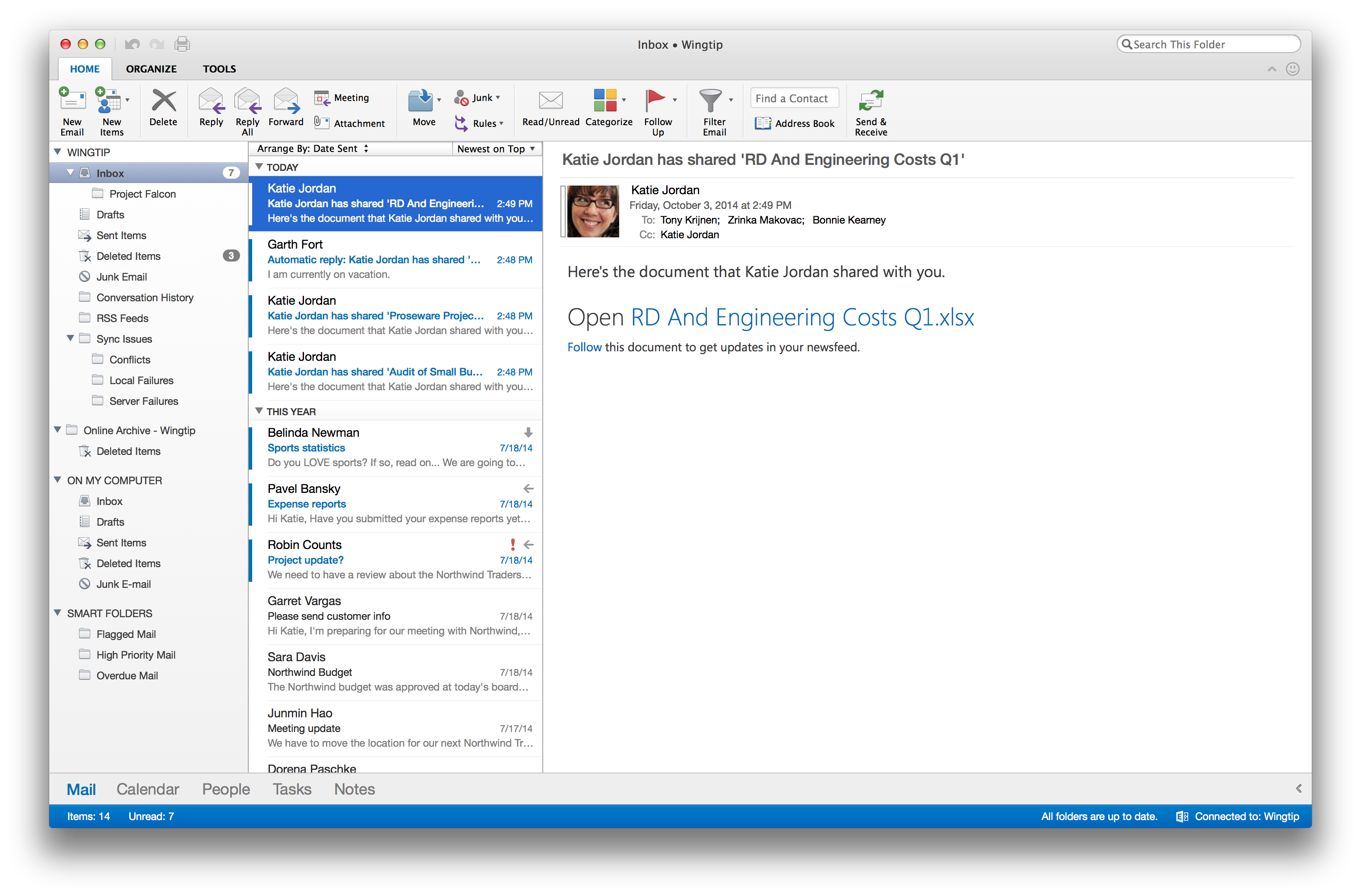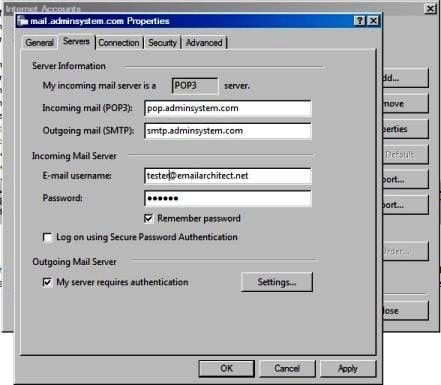- Small & Medium Business: Microsoft 365 Admins. Open a service request in the Microsoft 365 Admin Center. On-Premises Support. Get paid technical support for on-premises Microsoft products and services. Microsoft Store Support. Get help with choosing a Microsoft product, or ask about a previous purchase from the online or physical store.
- See full list on docs.microsoft.com.
- Microsoft Office 1.5 for Mac was released in 1991 and included the updated Excel 3.0, the first application to support Apple's System 7 operating system. Microsoft Office 3.0 for Mac was released in 1992 and included Word 5.0, Excel 4.0, PowerPoint 3.0 and Mail Client. Excel 4.0 was the first application to support new AppleScript.
- Excel No Supported Email Client
- Microsoft Excel No Supported Mail Client Mac Word
- Microsoft Excel No Supported Mail Client Login
I've checked the setting, 'Open in the client application' is checked. But the behavior is different from machine to machine, some of them open the Excel in the application, a few however open the Excel in web browser. It acts like the Excel application is not available on the machine, but it is available. Could you please provide some advices.
-->Original KB number: 2991457
Symptoms
Consider the following scenario. A user is running Office 2013 with Outlook 2013 as their default mail client:
In Microsoft Word a user attempts to share a document as an attachment by email or when a user attempts a mail merge and receives the errors:
Either there is no default mail client or the current mail client cannot fulfill the messaging request. Please run Microsoft Outlook and set it as the default mail client.
Word couldn't send mail because of MAPI failure: 'Unspecified error'.
In Microsoft PowerPoint a user attempts to share a presentation as an attachment by email and receives the errors:
Either there is no default mail client or the current mail client cannot fulfill the messaging request. Please run Microsoft Outlook and set it as the default mail client.
There was a general failure with the e-mail system and this action could not be completed.
In Microsoft Excel a user attempts to share a spreadsheet as an attachment by email and receives the errors
Either there is no default mail client or the current mail client cannot fulfill the messaging request. Please run Microsoft Outlook and set it as the default mail client.
General mail failure. Quit Microsoft Excel, restart the mail system, and try again.
A user in Windows Explorer attempts to send a file to a mail recipient and receives the error:
Either there is no default mail client or the current mail client cannot fulfill the messaging request. Please run Microsoft Outlook and set it as the default mail client.
Cause
This problem occurs because the MSIComponentID is set to an improper GUID for Outlook 2013. The correct GUID for Outlook 2013 is {6DB1921F-8B40-4406-A18B-E906DBEEF0C9}.
Resolution
A repair of Microsoft Office fixes the issue. To repair Microsoft Office, use the steps below.
Launch Control Panel.
In Windows 8 and Windows 8.1
Select Windows Logo key, type Control Panel in the Start screen, and then select Control Panel in the search results.
In Windows 7 and Windows Vista
Select Start, type Control Panel in the Start Search box, and then press Enter.
Select Program and Features.
Select Microsoft Office 2013, select either Quick Repair or Online Repair.
More information
Warning
Serious problems might occur if you modify the registry incorrectly by using Registry Editor or by using another method. These problems might require that you reinstall the operating system. Microsoft cannot guarantee that these problems can be solved. Modify the registry at your own risk.
The MSIComponentID can be found in the following registry data.
Key: HKEY_LOCAL_MACHINESOFTWAREClientsMailMicrosoft Outlook
Reg_SZ: MSIComponentID
Value: {6DB1921F-8B40-4406-A18B-E906DBEEF0C9}
For more information on how to repair Microsoft Office, see Repair an Office application.
-->Applies to: Azure Information Protection, Office 365
Relevant for: AIP unified labeling client and AIP classic client.
Note
To provide a unified and streamlined customer experience, the Azure Information Protection classic client and Label Management in the Azure Portal are deprecated as of March 31, 2021. While the classic client continues to work as configured, no further support is provided, and maintenance versions will no longer be released for the classic client.
We recommend that you migrate to unified labeling and upgrade to the unified labeling client. Learn more in our recent deprecation blog.
The applications and solutions listed on this page have built-in support for the Azure Rights Management (Azure RMS) service, which provides data protection for Azure Information Protection.
These applications and solutions are known as 'RMS-enlighted', and have Rights Management and usage restrictions tightly integrated using Rights Management APIs.
Note
Unless stated otherwise, the supported capabilities apply to both Azure RMS and AD RMS.
AD RMS support on iOS, Android, macOS, and Windows Phone 8.1 also requires the Active Directory Rights Management Services Mobile Device Extension.
Windows RMS-enlightened applications
| Type | Supported applications |
|---|---|
| Word, Excel, PowerPoint | - Microsoft 365 apps - Office 2010 - Office 2013 - Office 2016 - Office 2019 - Office for the web (viewing protected documents) - Web browser |
| - Outlook 2010 - Outlook 2013 - Outlook 2016 - Outlook 2019 - Outlook from Microsoft 365 Apps for Enterprise - Web browser - Windows Mail | |
| Other file types | - Visio from Microsoft 365 apps, Office 2019, and Office 2016: .vsdm, .vsdx, .vssm, .vstm, .vssx, .vstx - Azure Information Protection client for Windows: Text, images, pfile |
CAD files, such as .dwg files, are supported by partner solutions, such as SealPath RMS plugin for AutoCAD and SECUDE's HALOCAD plugin. For more information, see How to protect your CAD data files with MIP and HALOCAD.
macOS RMS-enlightened applications
| Type | Supported applications |
|---|---|
| Word, Excel, PowerPoint | - Microsoft 365 apps, version 16.40 or later - Office 2019 for Mac, version 16.40 or later - Office 2016 for Mac, version 16.16.27 or later - Office for the web - Web browser |
| - Outlook 2019 for Mac, version 16.40 or later - Outlook 2016 for Mac, version 16.16.27 or later - Web browser | |
| Other file types | RMS sharing app (viewing protected text, images, generically protected files) |
Android RMS-enlightened applications
| Type | Supported applications |
|---|---|
| Word, Excel, PowerPoint | - GigaTrust App for Android - Office for the web - Office Mobile (unless using sensitivity labels, limited to viewing and editing protected documents) - Web browser |
| - 9Folders - Azure Information Protection app (viewing protected emails) - BlackBerry Work - GigaTrust App for Android - Citrix WorxMail - NitroDesk - Outlook for Android - Samsung Email (S3 and later) - TITUS Classification for Mobile - Web browser | |
| Other file types | Azure Information Protection app (viewing protected text and images) |
iOS RMS-enlightened applications
| Type | Supported applications |
|---|---|
| Word, Excel, PowerPoint | - GigaTrust - Office Mobile - Office for the web - TITUS Docs - Web browser |
| - Azure Information Protection app (viewing protected email) - BlackBerry Work - Citrix WorxMail - NitroDesk - Outlook for iPad and iPhone - TITUS Mail - Web browser | |
| Other file types | - Azure Information Protection app (viewing protecting text and images) - TITUS Docs: Pfile |
Windows 10 mobile RMS-enlightened applications
| Type | Supported applications |
|---|---|
| Word, Excel, PowerPoint | - Office Mobile apps (viewing protected documents using Azure RMS) - Web browser |
| - Citrix WorxMail - Outlook Mail (viewing protected emails) - Web browser | |
| Other file types | Not supported |
Blackberry 10 RMS-enlightened applications

| Type | Supported applications |
|---|---|
| Word, Excel, PowerPoint | - Web browser |
| - Blackberry email - Web browser | |
| Other file types | Not supported |
Additional details about RMS-enlightened applications
For more information about the tables RMS-enlightened applications listed above, see:
Viewing protected content in email clients
When an email client protects a message, any Office files that are attached to the message, and are currently unprotected, are protected together with the email message. In such cases, both the email message and attachments can be viewed in the email client, by authorized recipients only.
However, if only the attachment is protected, but not the email message itself, the attachment cannot be previewed by the email client, even by authorized recipients.
Excel No Supported Email Client
Tip
For email clients that don't support protecting emails, consider using Exchange Online mail flow rules to apply this protection.
Supported text and image file types
File types other than Office files and email messages include text and image file types, with extensions such as .txt, .xml, .jpg, and .jpeg.
These files change their file name extension after they're natively protected by Rights Management, and then become read-only.
Files that cannot be natively protected have a .pfile file name extension after they are generically protected by Rights Management.
For more information, see the File types supported.
Microsoft 365 app support
Includes:
- Office apps, for the versions listed in the table of supported versions for Microsoft 365 Apps by update channel, from Microsoft 365 Apps for Business or Microsoft 365 Business Premium, when the user is assigned a license for Azure Rights Management (also known as Azure Information Protection for Office 365)
- Microsoft 365 Apps for Enterprise
Viewing protected documents in Office for the web
Supported only with Microsoft SharePoint and OneDrive, and the documents are unprotected before they are uploaded to a protected library.
Web browser support
Web browsers are supported for Word, Excel, and PowerPoint files, when the Office attachments are protected by using Microsoft 365 Message Encryption with the new capabilities.
For emails, web browsers are supported only in the following scenarios:
- If both the sender and the recipient are part of the same organization
- If the sender or recipient is using Exchange Online
- If the sender is using Exchange on-premises in a hybrid configuration
Email clients using Exchange ActiveSync IRM
The following email clients use Exchange ActiveSync IRM, which must be enabled by the Exchange administrator:
- Windows Mail
- 9Folders
- GigaTrust App for Android
- NitroDesk
- Outlook for Android
- Samsung Email (S3 and later)
- Outlook for iPad and iPhone
- Blackberry Email
Users can view, reply, and reply all for protected email messages but cannot protect new email messages.
If the email application cannot render the message because the Exchange ActiveSync IRM is not enabled, the recipient can view the email in a web browser when the sender uses Exchange Online, or Exchange on-premises in a hybrid configuration.
Azure RMS support for Office
Azure RMS is tightly integrated into the Word, Excel, PowerPoint, and Outlook apps, where this functionality is often referred to as Information Rights Management (IRM).
See also: Office Applications Service Description
Windows computers for Information Rights Management (IRM)
The following Office client suites support protecting files and emails on Windows computers by using the Azure Rights Management service:
Office apps, for the versions listed in the table of supported versions for Microsoft 365 Apps by update channel, from Microsoft 365 Apps for Business or Microsoft 365 Business Premium, when the user is assigned a license for Azure Rights Management (also known as Azure Information Protection for Office 365)
Microsoft 365 Apps for Enterprise
These editions of Office are included with most but not all subscriptions that include data protection from Azure Information Protection. Check your subscription information to see if Microsoft 365 Apps for Enterprise ProPlus is included. You'll also find this information in the Azure Information Protection datasheet.
Office Professional Plus 2019
Office Professional Plus 2016
Office Professional Plus 2013
Office Professional Plus 2010 with Service Pack 2
All editions of Office (with the exception of Office 2007) support consuming protected content.
Azure Rights Management service with Office Professional Plus 2010 and Service Pack 2 or Office Professional 2010 with Service Pack 2
When you use the Azure Rights Management service with Office Professional Plus 2010 and Service Pack 2 or Office Professional 2010 with Service Pack 2, you must also have the AIP client for Windows.
Additionally, this configuration:
- Is not supported on Windows 10.
- Does not support forms-based authentication for federated user accounts. These accounts must use Windows-Integrated Authentication.
- Does not support the ability to override template protection using custom permissions selected with the AIP client. In this scenario, the original protection must first be removed before custom permissions can be applied.
Mac computers for Information Rights Management (IRM)
The following Office client suites support protecting files and emails on macOS by using Azure RMS:
- Microsoft 365 Apps for Enterprise
- Office Standard 2019 for Mac
- Office Standard 2016 for Mac
All editions of Office for Mac 2019 and Office for Mac 2016 support consuming protected content.
Tip
If you are using the classic client on a Mac computer, you might find the following FAQ useful: How do I configure a Mac computer to protect and track documents?
Azure Information Protection apps for iOS and Android

The Azure Information Protection app for iOS and Android provides a viewer for rights-protected email messages (.rpmsg files) when these mobile devices don't have an email app that can open protected emails. This app can also open rights-protected PDF files, and pictures and text files that are rights-protected.
If your iOS and Android devices are enrolled by Microsoft Intune, users can install the app from the Company Portal and you can manage the app by using Intune's app protection policies.
For more information about how to use app, see the FAQ for Microsoft Azure Information Protection app for iOS and Android.
The Azure Information Protection client for Windows
To use Azure Information Protection, you must deploy the AIP client across your system.
Download the unified labeling client installation from the Microsoft Azure Information Protection page.
For more information, see:
AIP's classic client
If you have not yet upgraded, you may still have the legacy Azure Information Protection classic client deployed.
Microsoft Excel No Supported Mail Client Mac Word
For more information about deploying and using the classic client, see:
- Classic client user guide.
Note
To provide a unified and streamlined customer experience, the Azure Information Protection classic client and Label Management in the Azure Portal are deprecated as of March 31, 2021. While the classic client continues to work as configured, no further support is provided, and maintenance versions will no longer be released for the classic client.
We recommend that you migrate to unified labeling and upgrade to the unified labeling client. Learn more in our recent deprecation blog.
Microsoft Excel No Supported Mail Client Login

Rights Management sharing app
For Mac computers, the Rights Management sharing app offers a viewer for protected PDF files (.ppdf), protected text images, and generically protected files. It can also protect image files, but not other files. To protect Office files on these computers, use Office for Mac or Microsoft 365 Apps for Enterprise.
For more information, see the FAQ for Microsoft Rights Management Sharing Application for Mobile Platforms
Download the Rights Management sharing app for Mac computers from the Microsoft Azure Information Protection page.
Other applications that support Azure Information Protection
In addition to the applications listed above, any application that supports the APIs for the Azure Rights Management service can be integrated with Azure Information Protection.
Examples may include line-of-business applications written in-house, or applications from software vendors, written using the RSM SDKs.
Applications that are not supported by Azure RMS
Applications not currently supported by Azure RMS include:
- Microsoft OneDrive for SharePoint Server 2013
- XPS Viewer
- Applications running on Windows versions earlier than Windows 7, Service Pack 1
Next steps
See also:
- Requirements for Azure Information Protection.
- How applications support the Azure Rights Management service.
- Configuring applications for Azure Rights Management.
For the latest information about solutions that support the Azure Rights Management service and Azure Information Protection, see the blog post, Microsoft Ignite 2019 – Microsoft Information Protection solutions Partner ecosystem showcase.